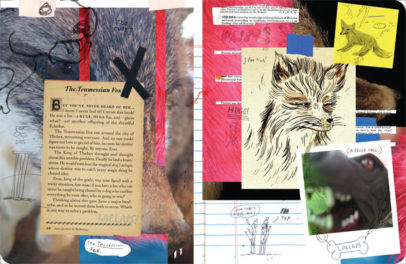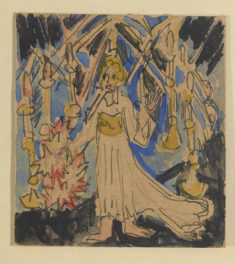Of all the research I completed for my new book, North of Dixie: Civil Rights Photography Beyond the South, no single archival collection proved more fun to explore—or provided more insights—than the Charles Brittin papers housed at the Getty Research Institute.
The expansive photography collection not only illustrated a lesser-known perspective on the civil rights movement—the view out west—it allowed me to explore how activist photographers helped advance modern America’s defining social movement well beyond the media glare of the era’s best-known clashes and speeches.
My earliest research for what would become North of Dixie began a decade ago. As a graduate student in Milwaukee, I became deeply interested in the contentious campaigns there and began exploring the visual history of the civil rights struggle in the urban North. Local photographers documented how young activists in the NAACP Youth Council led 200 nights of marches demanding fair housing legislation. Other dramatic pictures showed angry white youths holding signs with racist slogans rioting against the nonviolent marches.
I searched through stacks of books of civil rights photography and school textbooks for comparable images from the North, but found that very few were included. I began to wonder: Where were all the pictures of civil rights activism in the North and West? How might they help us understand the movement differently?
Despite growing up in the Midwest, I knew next to nothing about local campaigns for justice and equality in northern cities like Milwaukee, Minneapolis, or Chicago. I came to learn that this was due, in part, to how we teach schoolchildren a standard narrative that too often focuses on the most charismatic leaders, heroic moments, and landmark legislative achievements. These individuals and hard-fought victories deserve much respect, but it is critical to understand that the movement was about more than bus seats, lunch counter stools, and the right to vote in the South. In fact, activists challenged discrimination and racism in all of its forms and guises from coast to coast.
In 1962 Charles Brittin and his wife, Barbara, chose to forgo Christmas presents and instead send donations and join area groups and social causes they identified with. The couple attended a local meeting of the civil rights organization Congress of Racial Equality (CORE) and became actively engaged. Charles combined his artistic sensibilities and concern for social justice and became CORE’s local photographer. Brittin attended meetings, nonviolence training seminars, demonstrations, and rallies with a camera in hand and a growing awareness about how photography could advance the cause.

News media interviewing CORE activists waging a sit-in and hunger strike outside the Los Angeles Board of Education offices to raise awareness of segregation and inequality in the public schools, Los Angeles, 1963, Charles Brittin. The Getty Research Institute, 2005.M.11. © J. Paul Getty Trust
The resulting pictures showed up in CORE brochures, leaflets, and fundraising materials and were sent to news outlets and sympathetic publications covering local and national campaigns. Like some of the best-known civil rights era imagery, Brittin’s compelling pictures helped activists raise awareness, communicate issues more clearly, and solicit badly-needed financial support.
I knew little beyond the basic framework of Charles Brittin’s story before arriving in the serene special collections reading room at the Research Institute. As I carefully made my way through box after box of snapshots of local marches, sit-ins, shop-ins, demonstrations, and direct-action campaigns, Brittin’s critical perspective became clear. The collection provided a unique lens through which I could understand the many ways Black Angelenos, and their white allies, combated local injustices.
Tens of thousands of African Americans migrated to the West during the Great Migrations before and after the Second World War only to struggle against myriad forms of discrimination. Good jobs proved hard to find, and families in crowded and largely-segregated neighborhoods were not welcomed into sprawling new developments in and around the greater Los Angeles. Pinned in by pervasive segregation and housing discrimination, African American children attended largely segregated and unequal neighborhood schools.
CORE attacked entrenched segregation and underfunded schools with a variety of tactics in partnership with a host of local organizations. CORE spearheaded a sit-in and hunger strike for freedom at the L.A. Board of Education offices—which lasted over nine days—and generated considerable media attention. Brittin wrote years later that a “key reason for staging these demonstrations was to get press coverage that would make the wider public aware of those issues.”

Demonstrations erupted nationwide after city officials in Birmingham, Alabama, used police dogs and high-pressure fire hoses to suppress nonviolent civil rights demonstrations in May 1963. Some marchers in Los Angeles used the demonstration to call attention to the issue of police brutality in their own community. Photograph by Charles Brittin. The Getty Research Institute, 2005.M.11. © J. Paul Getty Trust

Contact sheet showing protesters arrested during a civil rights demonstration, with markings by photographer Charles Brittin. The Getty Research Institute, 2015.M.11. © J. Paul Getty Trust

This contact sheet features Charles Brittin’s photographs taken during a March 10, 1965, protest at the Federal Building in downtown Los Angeles in response to the shocking violence and beatings in Selma, Alabama. The Getty Research Institute, 2005.M.11. © J. Paul Getty Trust

Charles Brittin’s snapshot of CORE activists locking their ankles together during a sit-in at a realty office captures the dedication and diversity of the protestors demanding an end to housing discrimination. The Getty Research Institute, 2005.M.11. © J. Paul Getty Trust
Sometimes the civil rights activists attracted unwanted attention. In 1963, while CORE picketed a series of housing tracts developed by local builder Don Wilson, members of the American Nazi Party counter-demonstrated with signs reading “Go Back to Africa” and “We Fight for White Rights.” Brittin’s picture, shown at the top of the post, was published in the African American weekly newspaper, Los Angeles Sentinel.
Every photograph, whether published or not, represents but a split-second in time. Brittin’s prints, negatives, and contact sheets provide researchers like me with additional glimpses of each campaign and action he documented. The hundreds of pictures plainly illustrate how grassroots movements were conceived, built, and waged by community leaders and ordinary citizens determined to make change in their community. Similarly, handbills, article clippings, and ephemera, such as tags activists wore in case they were arrested, testify to the personal danger and further contextualize the photographs.
The opportunity to delve deep into this compelling archive helped me explore Brittin’s role within CORE, a critical civil rights organization. Brittin’s compelling body of work expands our crucial understanding of how activists out west documented and advanced the long black freedom struggle with photography.

Me in the Department of Photographs Study Room at the J. Paul Getty Museum during my research at the Getty in April 2015.
_____
For those interested in learning more about Charles Brittin and his wide-ranging and inspiring photographic work, more information about his papers and photography collections is available here.
Also, a series of interviews with the photographer were recently made available online and can be found here.
Text of this post © Mark Speltz. All rights reserved.





Comments on this post are now closed.